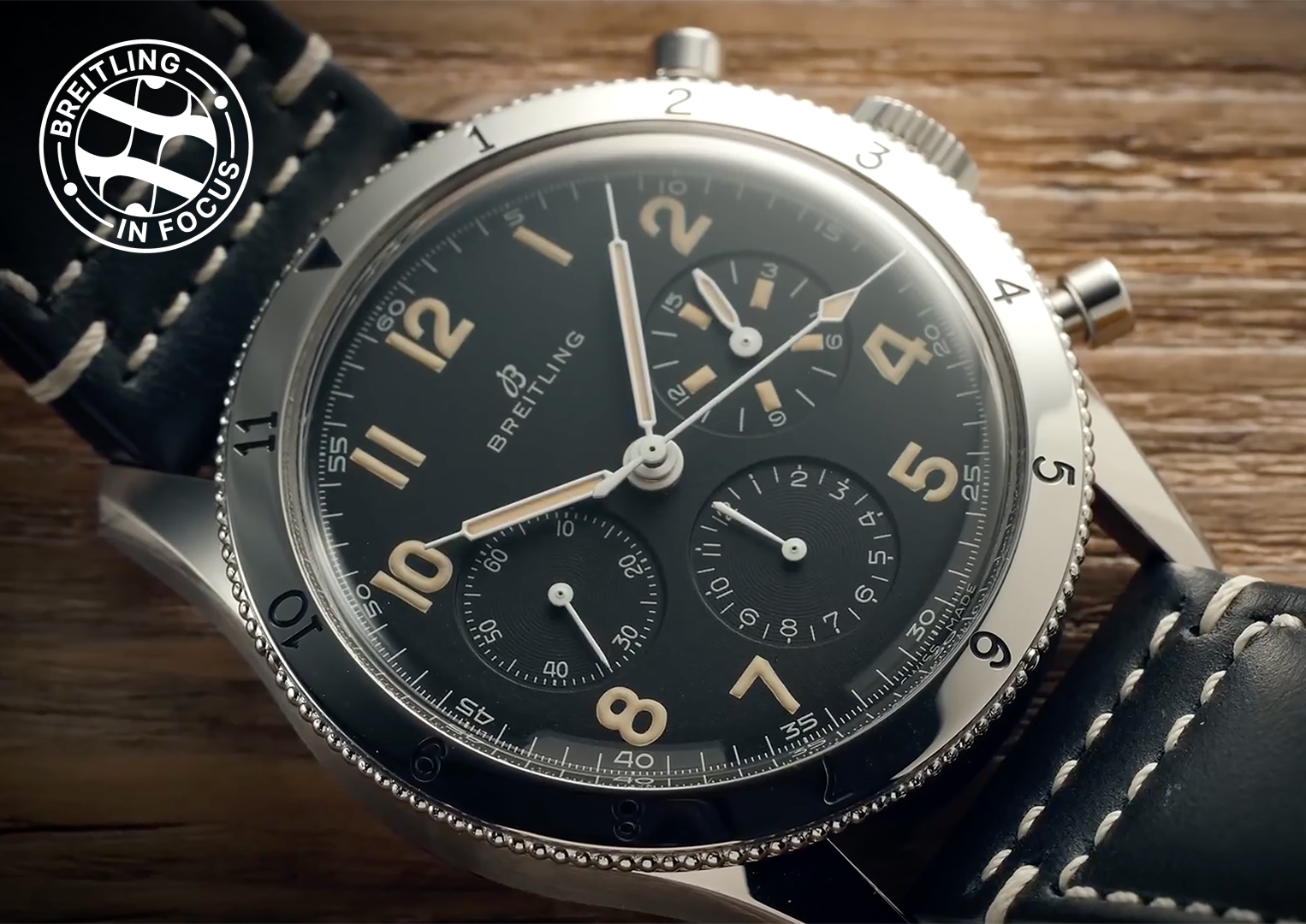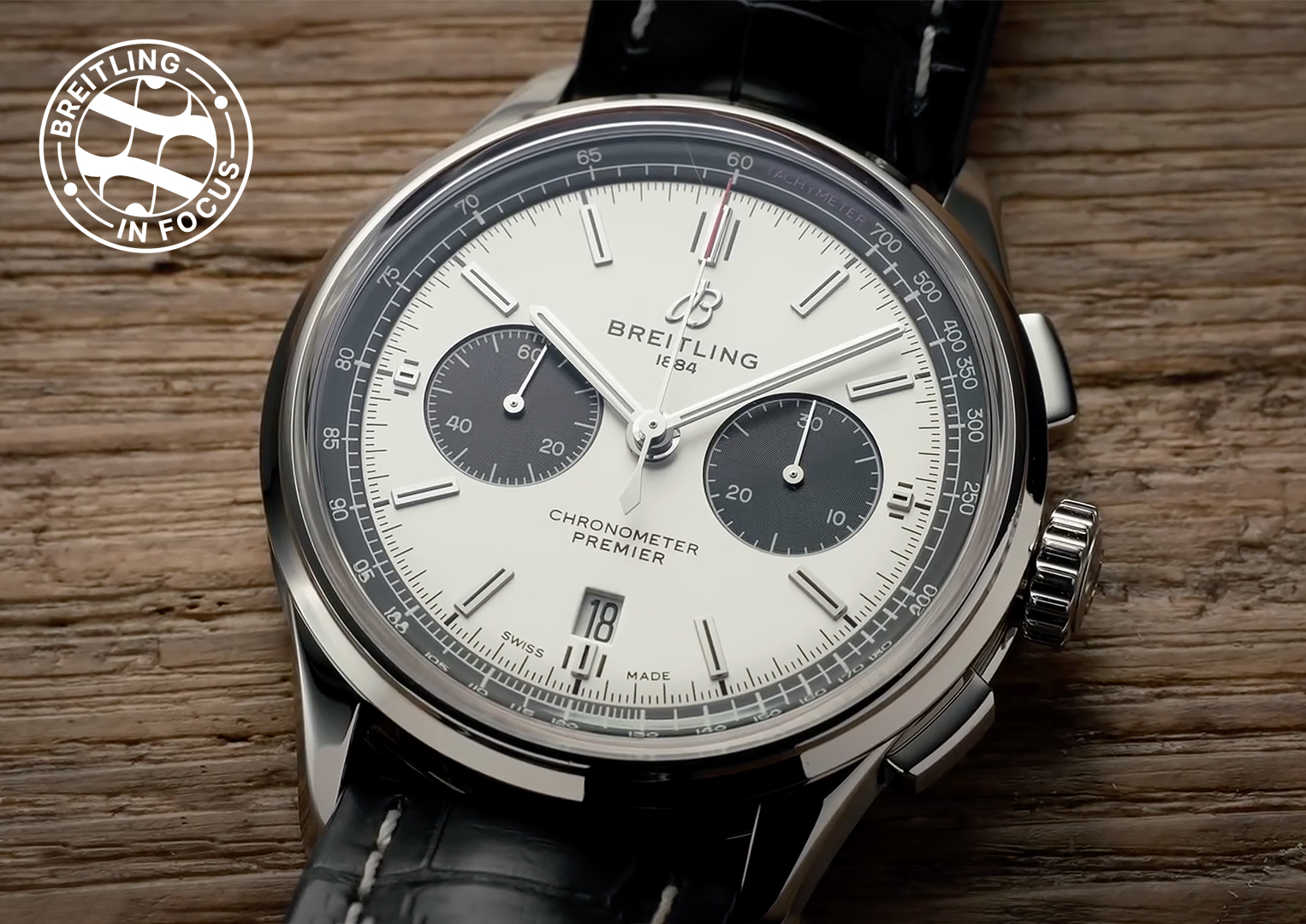Feature: 3 More Things You’ve Got To Know About Breitling
This is another article in our “In Focus” series where we’re taking a closer look at six of the most popular luxury watch brands in the world over the course of six weeks—starting with Breitling.
As well as videos, there’s some great articles here on watchfinder.com, and there’s some fun stuff over on our Instagram channel too. In the meantime, here are three more things you didn’t know about Breitling watches.
There Was No Breitling Until 40 Years After It Was Founded
These days, branding is as important—if not more—than the product itself. How many times have you heard of some incredible invention that had absolutely no branding whatsoever? Well, that’s exactly the point—you don’t. Without a brand, without an ethos, an invention is otherwise just another quiet idea diluted into obscurity. Such is the competition to get in front of you these days—yes, you—that there’s just no way to do it without having a brand. It’s a crowded space fighting over the most precious of assets: time.
It wasn’t always this way. In the 1800s, the century Breitling was founded in, things were a little slower. Some of the greatest inventions of the period include the postage stamp, the typewriter and bicycle. It took nearly half a century for someone to figure out how to add a motor to said bicycle.

A slower pace meant a different approach to manufacture. Brand just wasn’t important. As a business, if you made a thing people wanted, chances are your distribution was as wide as a few towns over and your nearest competition was old man John three streets along. Anyway, old man John’s a has-been and his invention isn’t anywhere near as good.
There were no dwell times and click through rates; at best you might take yourself down to the local trade fair—obviously with a better stall than old man John—and traders would come by and order a few bits here and there to keep you going until the next fair. This is the reason why Breitling watches—and indeed many other watches of the time—didn’t have any branding.
It’s almost hard to imagine given how conditioned we are to branding, but quite simply, a Breitling watch didn’t say “Breitling” on it, anywhere, and especially not the dial. It might have had a model name, or even the customer’s name, but not the brand. In fact, it wasn’t until the 1920s, over thirty years after Breitling was founded, that the illustrious name finally made an appearance. So how did you know the watch you were buying was a Breitling? Because you probably bought it from the man himself. As long as you didn’t buy it from old man John.
Breitling SuperQuartz Is Actually Incredible
The second time Breitling found itself in a bit of a financial pickle was during the so-called quartz crisis. It’s a tale as old as time: like the record player, cassette tape, CD and minidisc, the Swiss lever escapement, after more than two centuries of service, was defunct. No one more day till retirement, no commemorative pen, no leaving do—it was quick, it was brutal, and it left Swiss watchmaking a complete wreck.
In just a decade, a centuries-long industry was cut down by two-thirds. The surviving brands struggled to reinvent themselves in a drastically different market. An entire nation pivoted into a new era, some parts successfully and others not.
You might think that Breitling was one of those success stories as it’s still with us today, but it wasn’t. In 1978, with Willy Breitling suffering ill health, the business had gone under, laying off staff and shutting its doors forever. Or, it would have been forever, had one Ernest Schneider not made the purchase of a lifetime.
Watch enthusiast and aviator, having—ironically—made his money in microelectronics, Schneider could not bear to see his beloved Breitling disappear forever. In 1979, the rights to the Breitling name were his.
A month later, Willy Breitling passed away.

At this point, it would have been fruitless to continue pushing Breitling as a maker of mechanical watches, so Schneider took a different tack, bringing the aviation instrument legacy into a new era of quartz. Whilst this is hardly the brand’s brightest moment, it was a necessity that kept it alive—but it also had a secondary effect.
Unveiled in 2001, the Breitling SuperQuartz movement demonstrated a pivotal next step in the pursuit of accuracy. Independent chronometer certification will only be found in five percent of Swiss watches, and not for quartz—with the exception of SuperQuartz. Where a standard quartz movement reads the vibrations generated by passing a current through a quartz crystal, which deviates with temperature, the SuperQuartz is a lot cleverer.
A quartz crystal that vibrates too fast is fitted, alongside a thermometer that measures the ambient temperature. As the temperature changes, the onboard circuit knows to ignore some of the vibrations coming from the crystal, adapting to the changing environment. It takes 8,000 components to achieve—three times a standard quartz—and the result is an accuracy of fifteen seconds per year.
Breitling Owned Nine Jet Fighters
It took Breitling a while to commit to the whole aviation thing, but with the success of the 1950’s Navitimer, it was clear that a relationship with the sky was the watchmaker’s destiny. Having equipped not only Second World War RAF pilots with watches, but RAF planes with instruments too, it was a fate sealed from the beginning.
But watches weren’t the only aviation tool Breitling had in its arsenal. In 2003, the company demonstrated a rather unexpected commitment to the aeronautical by actually buying a plane of its own. Well, not a plane, some planes. Four, in fact. And not just any old planes—four L-39 Albatros jet fighters. Developed as a high-performance jet trainer by Czechoslovakian firm Aero in the 1960s, the L-39 Albatros was the first equipped with a turbofan—a Soviet Union Ivchenko AI-25TL—giving it a top speed of 750kph.
And the jets weren’t purchased as some sort of high-speed executive transport—they formed the inaugural Breitling Jet Team, an aerobatic display outfit that performed at air shows around the globe. Based in Dijon, France, and now sporting seven jets, it’s the largest civilian aerobatic display team in Europe and the first in the world. It’s been around in some form or another since 1982, with the team being passed from sponsor to sponsor five times, finding a home with Breitling for seventeen years.

But with high speed comes high danger. In 2012, an engine failure forced pilot Bernard Charbonnel and technician Raphael Savoye to eject following an engine failure, with both bailing out after the aircraft had been safely redirected towards an empty field. The aircraft was lost, but Charbonnel’s calm manner and quick thinking kept the pair safe from harm.
Unfortunately, in 2019, Breitling’s contract with the team ended and was not renewed. Continuing as Apache Aviation, the team offers training and air experience flights and hopes to find a sponsor to help continue its work as a display team.
As the Breitling In Focus week comes to a close, we look forward to what’s coming next week. With Breitling in at number six, any guesses as to what the fifth most popular brand might be? Make sure to join us here at watchfinder.com to find out, as well as our Instagram … unless you’re old man John.
Looking for a pre-owned Breitling watch? Click here to shop now
Looking for pre-owned Breitling finance? Click here to shop now



